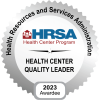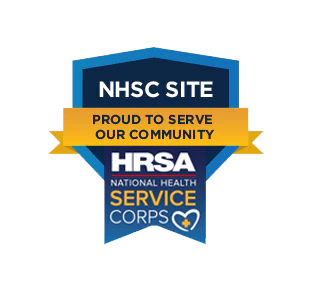The Power of Positive Thinking blog post was written by Therapist Jennifer Weidner, MSW, LCSW at Community Health Systems.

Everyone has heard the comment: are you a cup half empty or cup half full person? It may seem like a silly phrase but actually has significant meaning, as it refers to the way in which we see the world, either from a positive or negative point of view. As we learn more about the strong connection between mind and body, the ways in which we think and process information have a profound impact on stress levels, happiness, and physical and mental health. Understanding, learning, and using the power of positive thinking is an important step in good self-care.
What is positive thinking?
Positive thinking, or an optimistic attitude is a way of viewing the world, events, and experiences, and making it a practice of focusing on the good in any given situation.
That doesn’t mean you ignore reality or make light of problems. It simply means you approach the good and the bad in life with the expectation that things will go well instead of focusing on the worst-case scenario. It also means positive people are looking for good things in their lives, as these are often passed over when people feel overwhelmed or tend to focus on what isn’t going right in their lives.
So, what does a person do if they don’t come by a positive attitude naturally? Are they destined to unhappiness and a cup half empty lifestyle? The good news is no, learning the art of positivity is a skill that can be learned. Some people come by this trait naturally but for those that don’t, there is hope. By learning the right skills and techniques, a person can move away from their natural tendency toward pessimism.
Benefits of positive thinking
There are numerous studies that identify the many benefits of positive thinking. Some of these include:
Physical Health
- Increased pain tolerance
- Better overall health
- Increased ability to manage stress
- Greater impunity to illnesses such as the common cold
- Decreased risk of heart attack
Mental Health
- Decreased depression
- Increased self confidence
- More effective coping skills
- Greater ability to solve problems
Identify the negative
Before anyone can make changes, it is first important to identify what are some of the current behaviors, thoughts or assumptions that support pessimism or negativity. Some types of negative thinking include:
Black or white/all or nothing thinking: This is a tendency to think in extremes. If something doesn’t go exactly as expected, it is horrible, unfair, or unacceptable. Be aware of words like “always” or “never” which can signal this rigid thinking pattern.
Catastrophizing: Some people refer to this thought process as “making a mountain out of a mole hill.” Meaning, building up an issue to be bigger and more problematic than it really is or has to be.
Internalizing: This refers to the process of blaming self, making assumptions that the reason something has happened is your fault, even if there are no facts to back up this assumption. For example, if a friend doesn’t call or text right away, the assumption maybe you did something to make them mad or they don’t like you anymore.
Focus on the negative: Sometimes, we appear to have “blinders” on and can only see the negative in a situation instead of all the good. For example, you have a cookout with friends, and you try a new recipe that doesn’t turn out the way you had hoped. Instead of focusing on a night of laughs and spending time with friends, you allow the thought of the ruined side dish to overshadow the whole evening.
Learning the art of being positive
There are many skills that can help to become more effective at positive thinking. Like any skill, it takes practice and hard work to change old routines that have become habit but are not necessarily health for us. Here are some techniques for being more positive.
Practice positive self-talk: Often we can overlook the mistakes of others or be quick to forgive. We tend to be the hardest on ourselves and our worst critics. The first step is becoming aware of the “negative dialogue” we say to ourselves internally. Too often, these comments have become so habitual or ingrained we hardly notice them. Try reframing negative comments about self to something more positive. Moving from “I cannot believe I was so stupid” to “Now I have the information for next time this happens”.
Practice showing gratitude: This has been shown to reduce stress, improve self-esteem, and foster resilience even in very difficult times. Think of people, moments, or things that bring you some kind of comfort or happiness and try to express your gratitude at least once a day. This can be thanking a co-worker for helping with a project, a loved one for washing the dishes, or your dog for the unconditional love they give you. Some people add to this by creating a gratitude journal to record things they are grateful for. This can further improve the moments by having them written down to reflect on later, especially if you are having a difficult day and need to be reminded of the good.
Smile: Sometimes instead of waiting to feel better, we have to take action and smiling instead of frowning or even having a neutral expression can be an easy first step. A smile also tends to positively engage those around us, and many will return a smile, further strengthening positive feelings.
Use of humor: Using humor to cope with life can allow us to see things from a less serious vantage point. Whenever we can laugh and see the humor in something, it decreases stress and tension and allows us to see the situation more clearly.
Surround yourself with positive people: The attitudes of the people we spend time with are contagious. More positive people are uplifting and will help to bolster our self-esteem. Identify the people you spend time with; do they support your goals or are they critical and make you feel bad and focus on blaming? Who you can spend time with can have a big impact on your mind set.
Look for the positive: We all have a choice about what we choose to see in the world, as both positive and negative things exist, it just depends on where we decide to put our energy and focus. There is always a “silver lining” in any situation if you look hard enough.
Although it can be difficult to change years of negativity, pick one strategy to start with and build from there to avoid becoming overwhelmed. Try to reframe or look for a positive on a daily basis and over time, it will become more natural and easier to do.
References:
https://www.healthline.com/health/how-to-think-positive
https://www.webmd.com/mental-health/positive-thinking-overview
Positive thinking













